Supper at Emmaus, signed and dated 1943 – Roman School (?) Twentieth Century.
Oil on canvas, 60 × 85 cm with antique frame. Dated ’43 and signed, although the signature is only partially legible.
The scene depicts a modern Christ, without a halo, placed at the centre of an essential composition. The subject refers to the Supper at Emmaus, here reinterpreted in a contemporary key and stripped of any devotional emphasis. To his left, a male figure seems to dissolve into the light emanating from the centre, creating an effect of gradual disappearance. The table, rendered with a deliberately distorted perspective, introduces an unstable geometry that recalls Cubist experiments.
It is evident, from close observation, that the work was executed using salvaged materials. The antique stretcher, fixed with forged nails, shows on the reverse traces of another canvas, probably painted in dark tones and reused. The frame, with joinery typical of the seventeenth century, is also a recovered piece and was later repainted white. This pictorial impulse, born from minimal means, conveys a veiled message: a Christ appearing to travellers, a miracle, a sign of hope in the dark days of war.
The painting is richly worked, close in texture and structure to the research of Roman School painters, with a return to realism filtered through metaphysical atmospheres. The palette, dominated by muted, earthy tones, and the barely indicated outlines create a suspended, meditative mood. The craquelure on the surface is the result of the execution technique, imperfect due to the difficulty of obtaining materials during wartime.
The work remains in its original state, with the paint layer almost untouched by restoration.



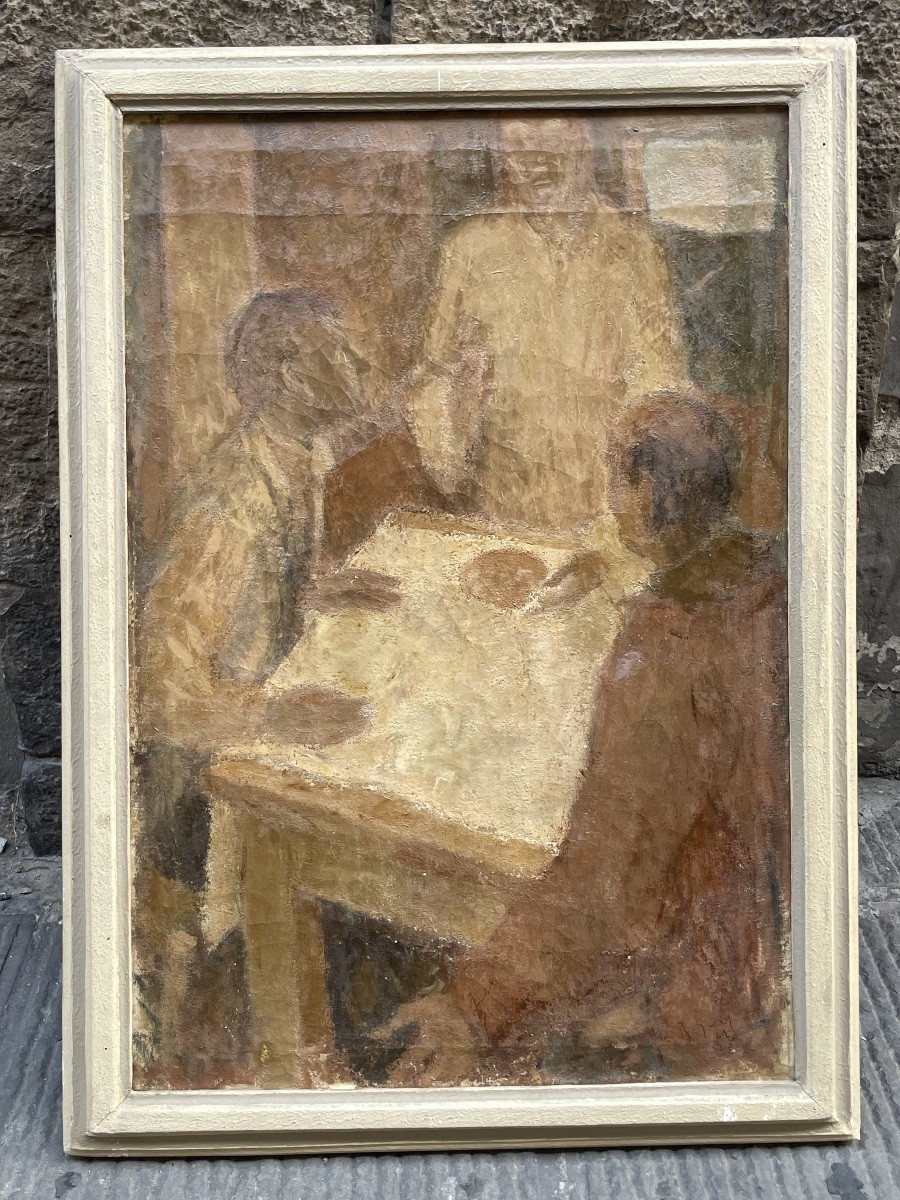
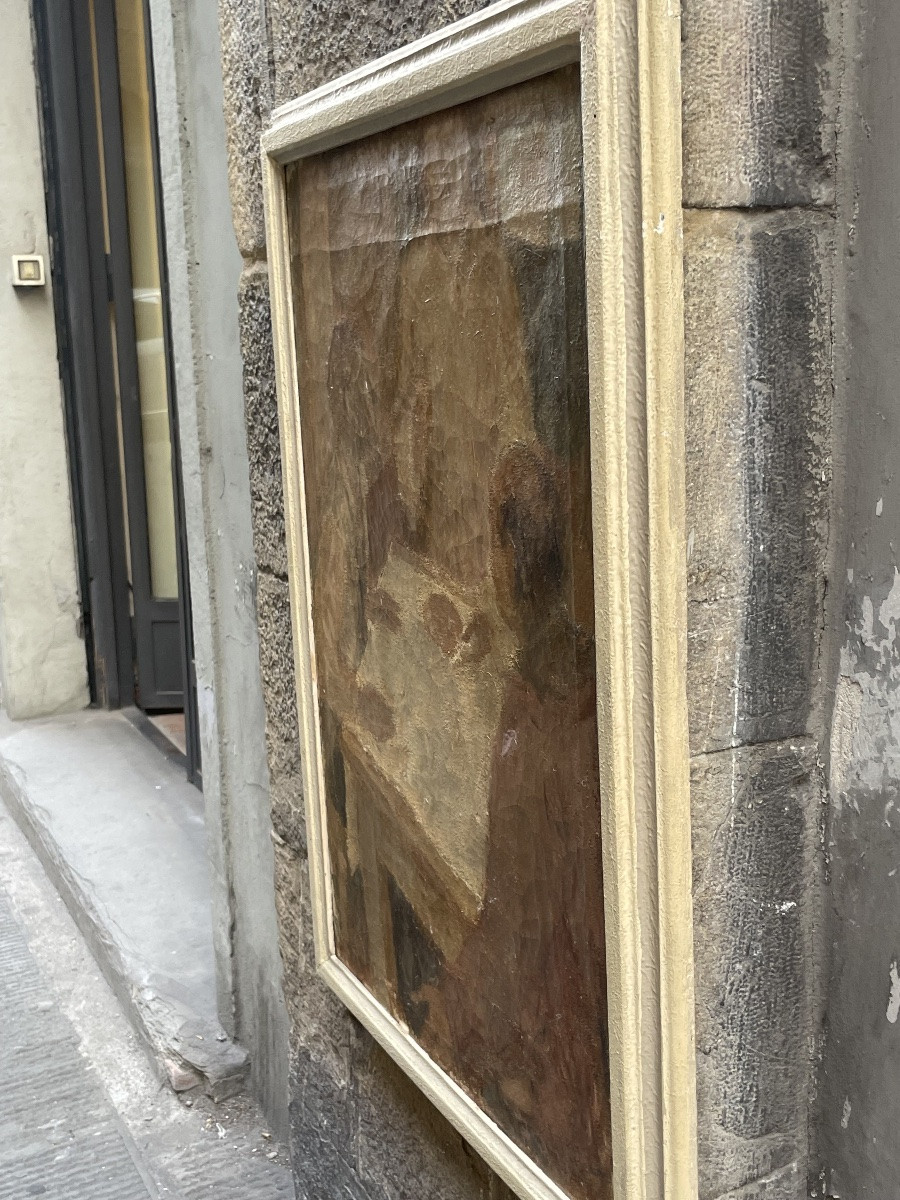

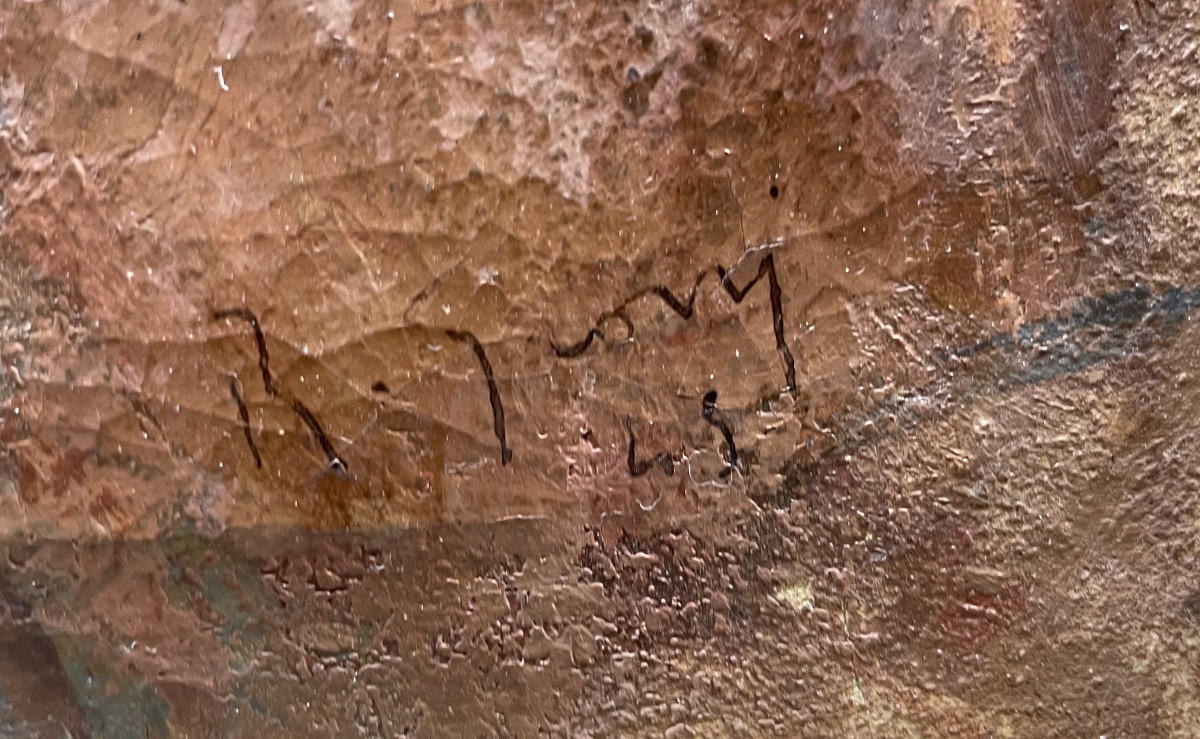
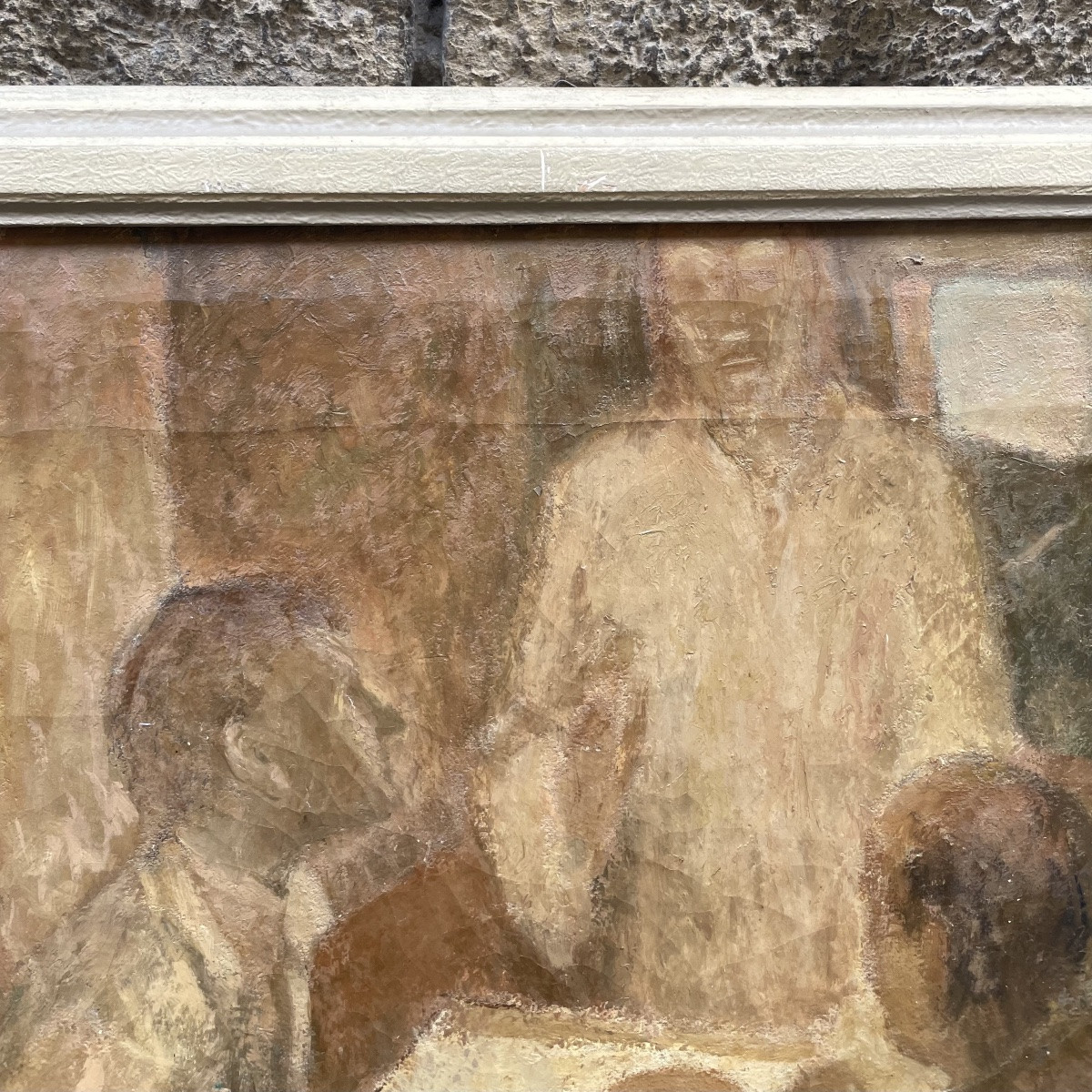

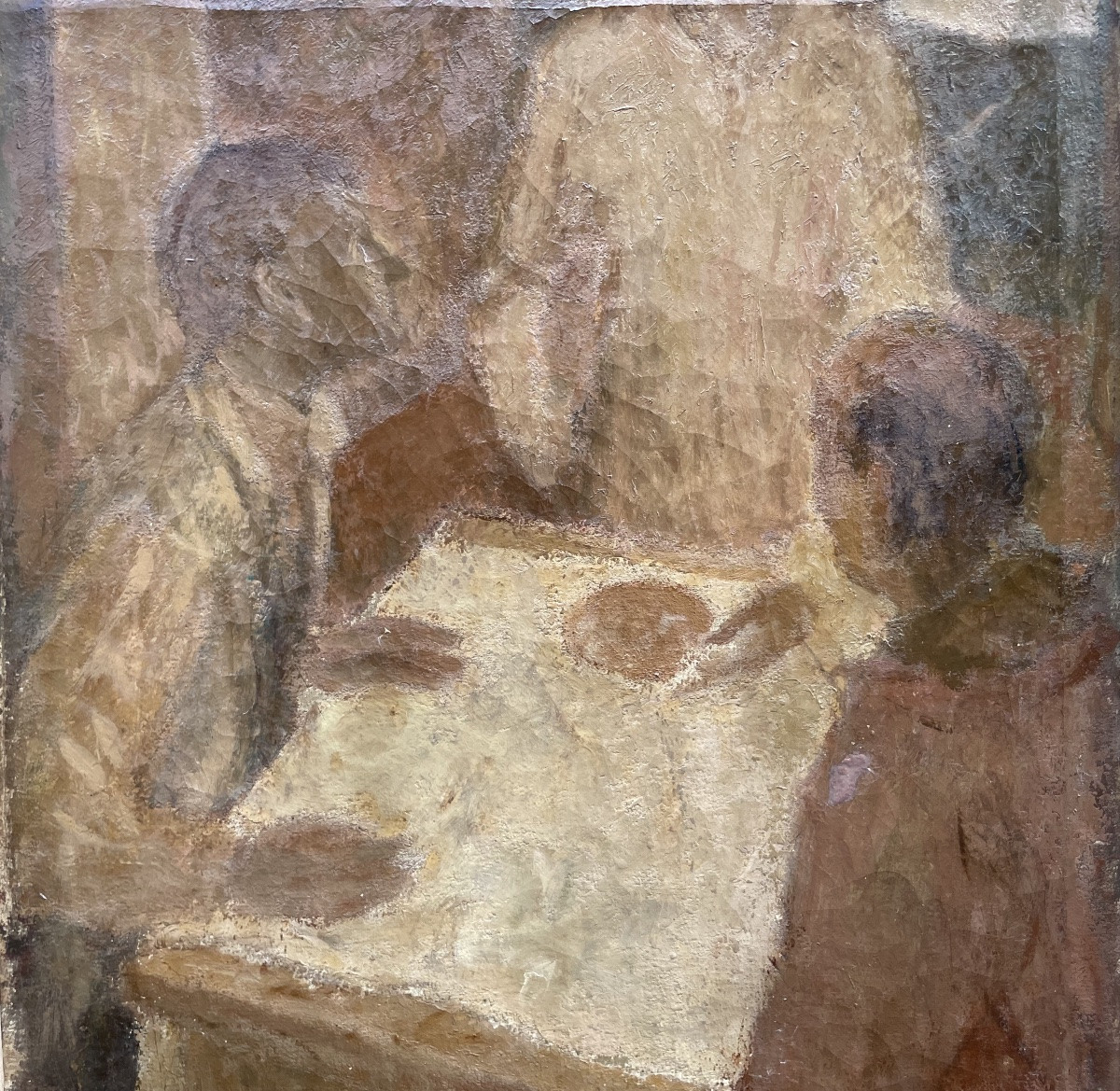
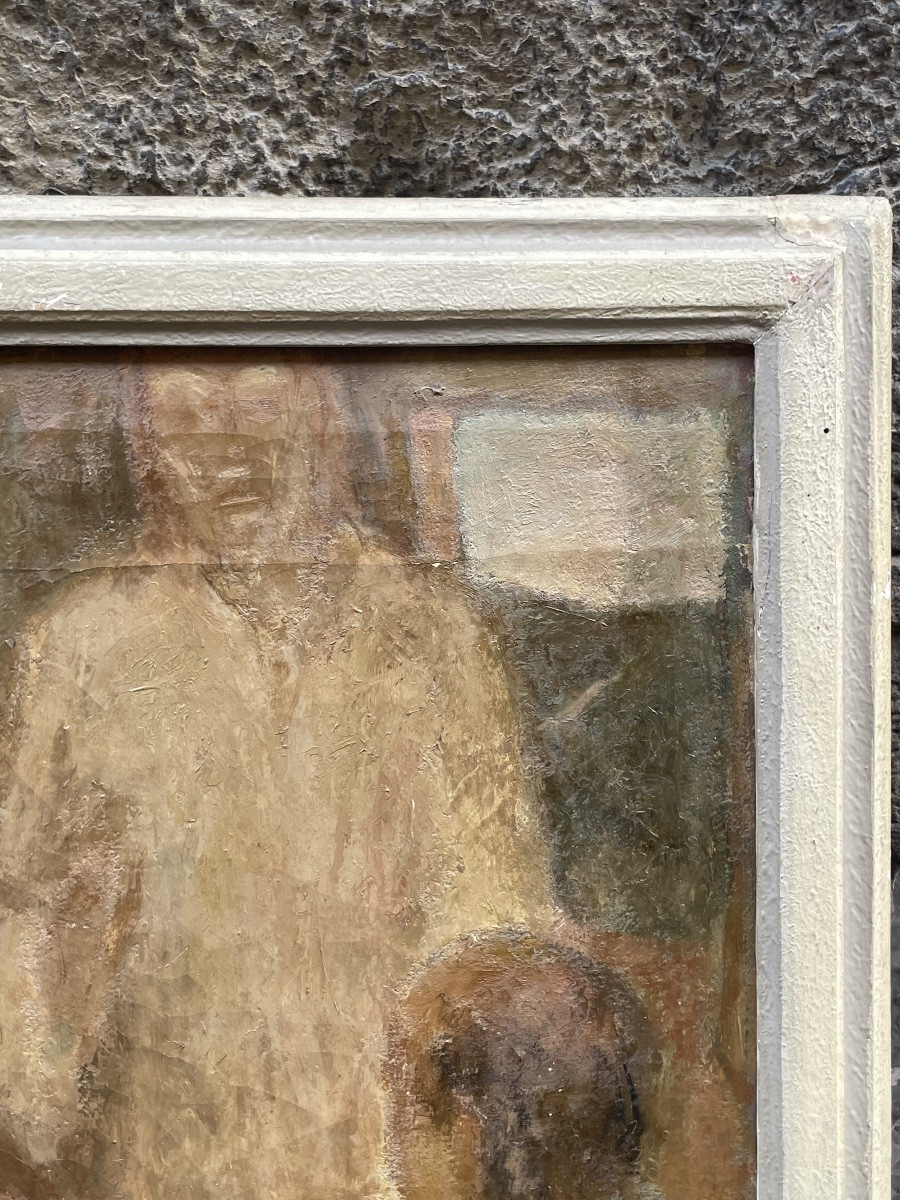

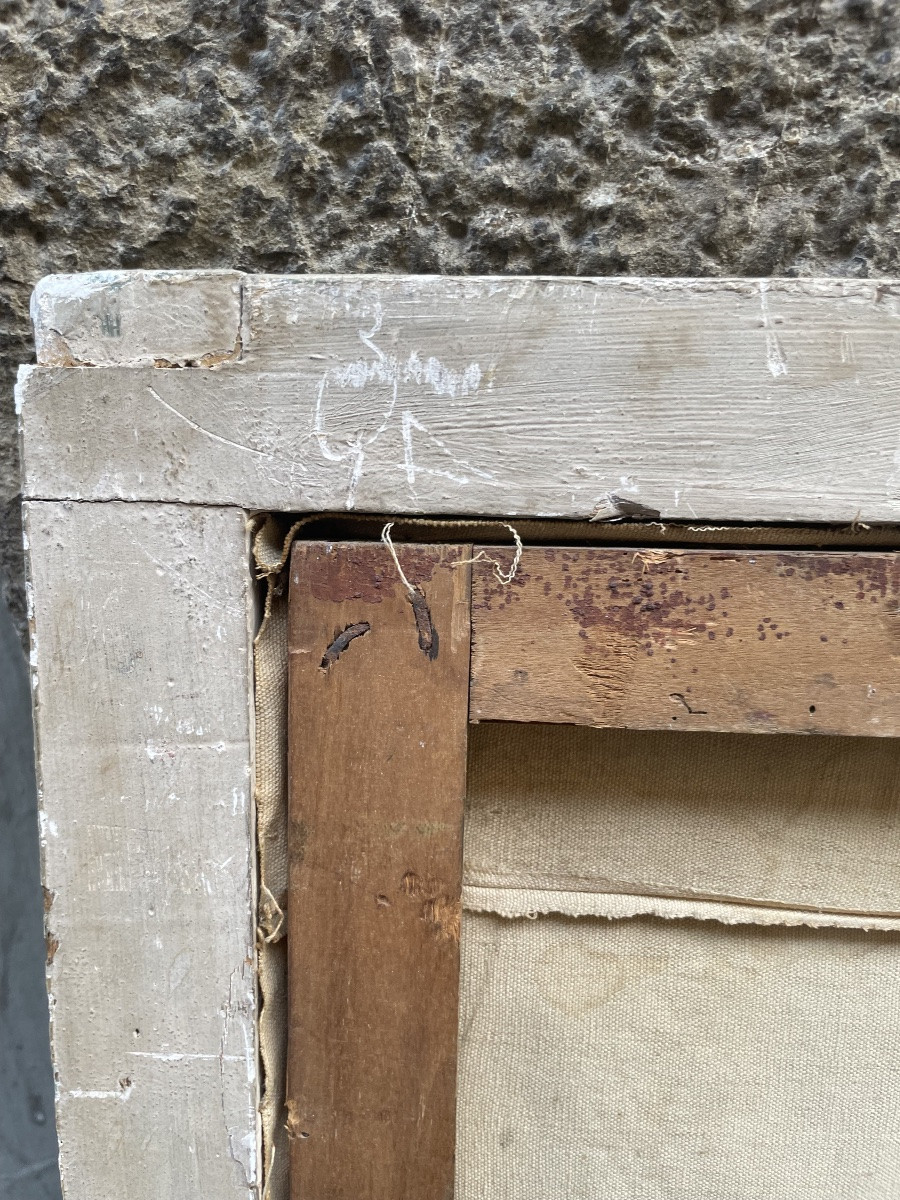


















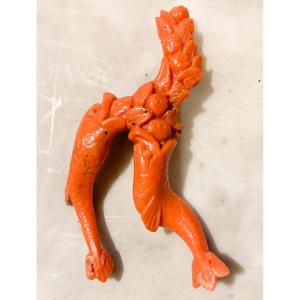


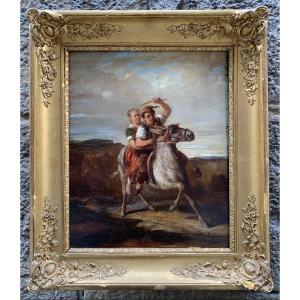



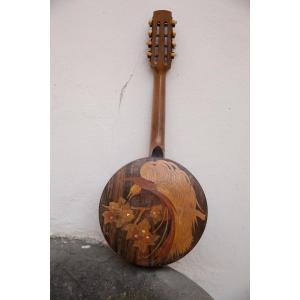
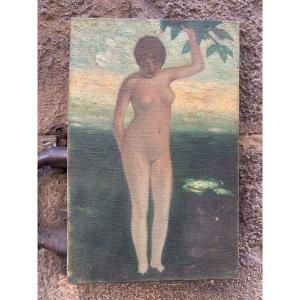


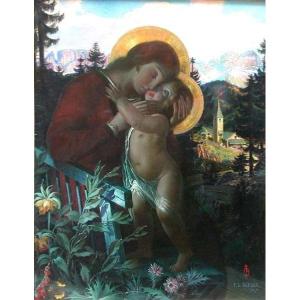

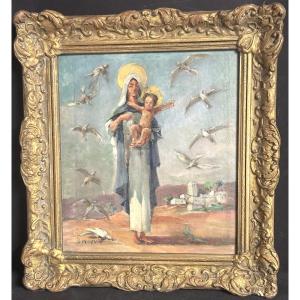





 Le Magazine de PROANTIC
Le Magazine de PROANTIC TRÉSORS Magazine
TRÉSORS Magazine Rivista Artiquariato
Rivista Artiquariato